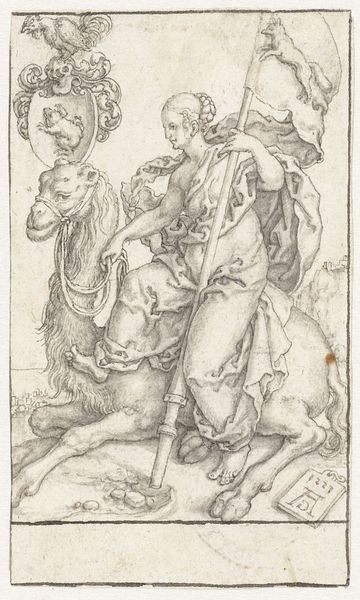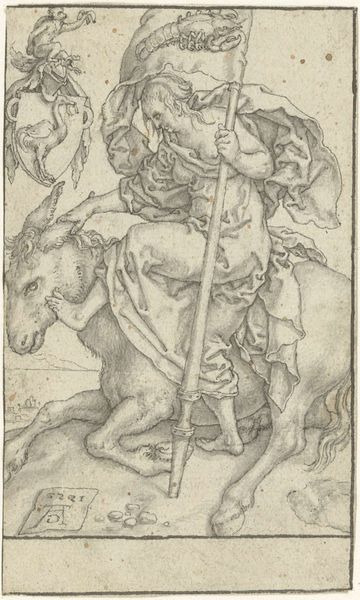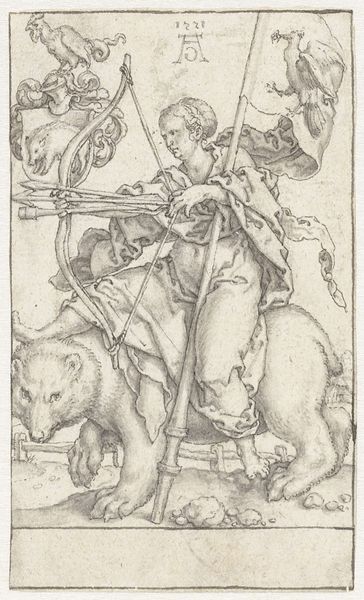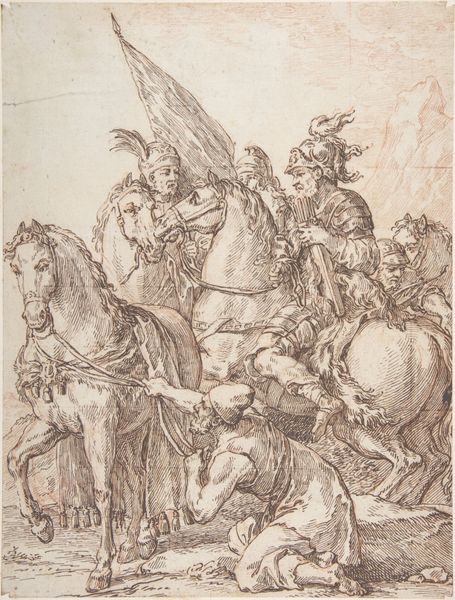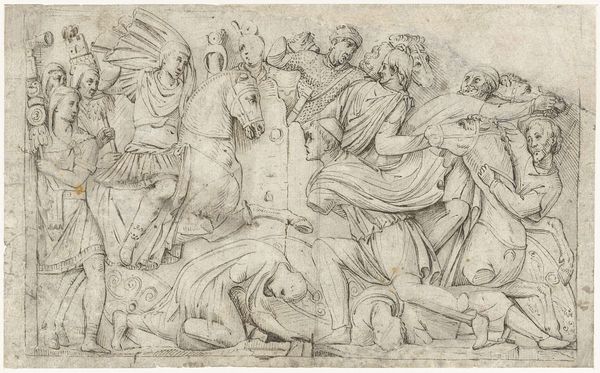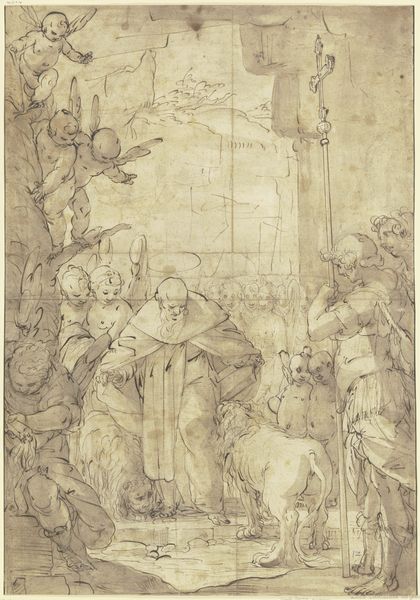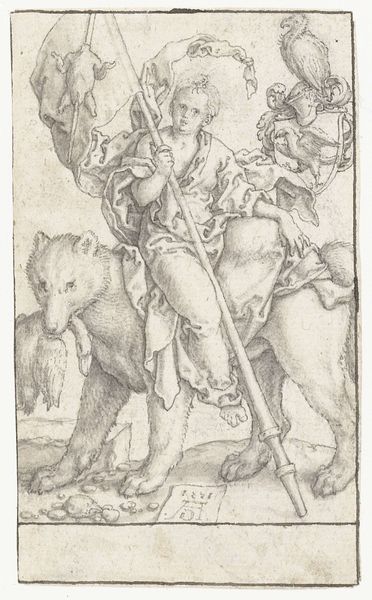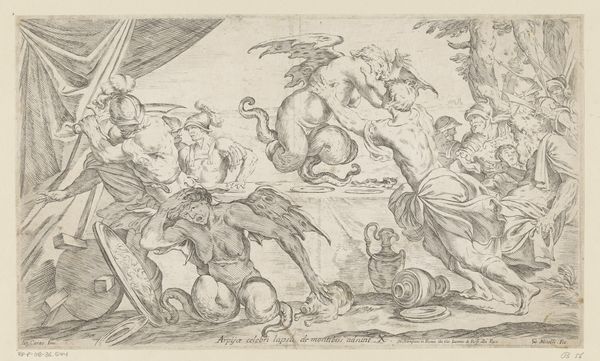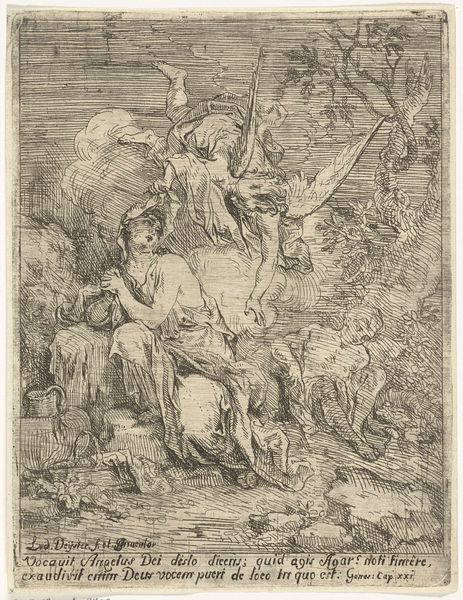
print, engraving
#
allegory
# print
#
figuration
#
history-painting
#
northern-renaissance
#
engraving
Dimensions: height 104 mm, width 62 mm
Copyright: Rijks Museum: Open Domain
Editor: So, this is "Trots," an engraving by Heinrich Aldegrever from around 1550, currently held at the Rijksmuseum. What immediately strikes me is the density of the line work. It seems incredibly detailed for an engraving. How might you approach this piece? Curator: I'm drawn to consider the engraving as an object produced under specific conditions. We need to look at the labor involved, the availability of materials like copper plates and engraving tools, and the networks through which Aldegrever circulated his prints. This wasn't just about artistic inspiration; it was about production and consumption in 16th century Europe. Editor: That's a great point. I tend to focus more on iconography. Here, we have a woman on horseback trampling a lion. Curator: Right, but the "why" of that image comes from understanding the social context. Who was buying these prints? What messages were they meant to convey and reinforce for their intended audience? Allegory was a product to be consumed. Also, the means of replicating it in multiples had social and political consequences. Consider that the production process was also how the artistry became accessible to many different people at once. Editor: I never really thought about it in terms of accessibility, the print *is* more democratic. Are the materials themselves reflective of that push? Curator: The relatively inexpensive materials—copper, paper, ink—allowed for wider distribution. Also consider how the print medium elevated the status of draftsmanship, making technical skill a valued commodity. Editor: So, the value isn't just in the artistic concept but also in the labor and materials... Curator: Exactly! Looking at art this way encourages us to rethink traditional hierarchies that elevate painting above printmaking or 'high art' above 'craft'. Editor: This perspective makes me consider the role of the artisan so differently. I think it's essential to remember that art is produced, consumed, and deeply linked to social and material conditions. Thanks, this was illuminating. Curator: Indeed. I see how focusing on materials shifts our emphasis to understanding art as both an ideological product and a practical artifact of labor.
Comments
No comments
Be the first to comment and join the conversation on the ultimate creative platform.
